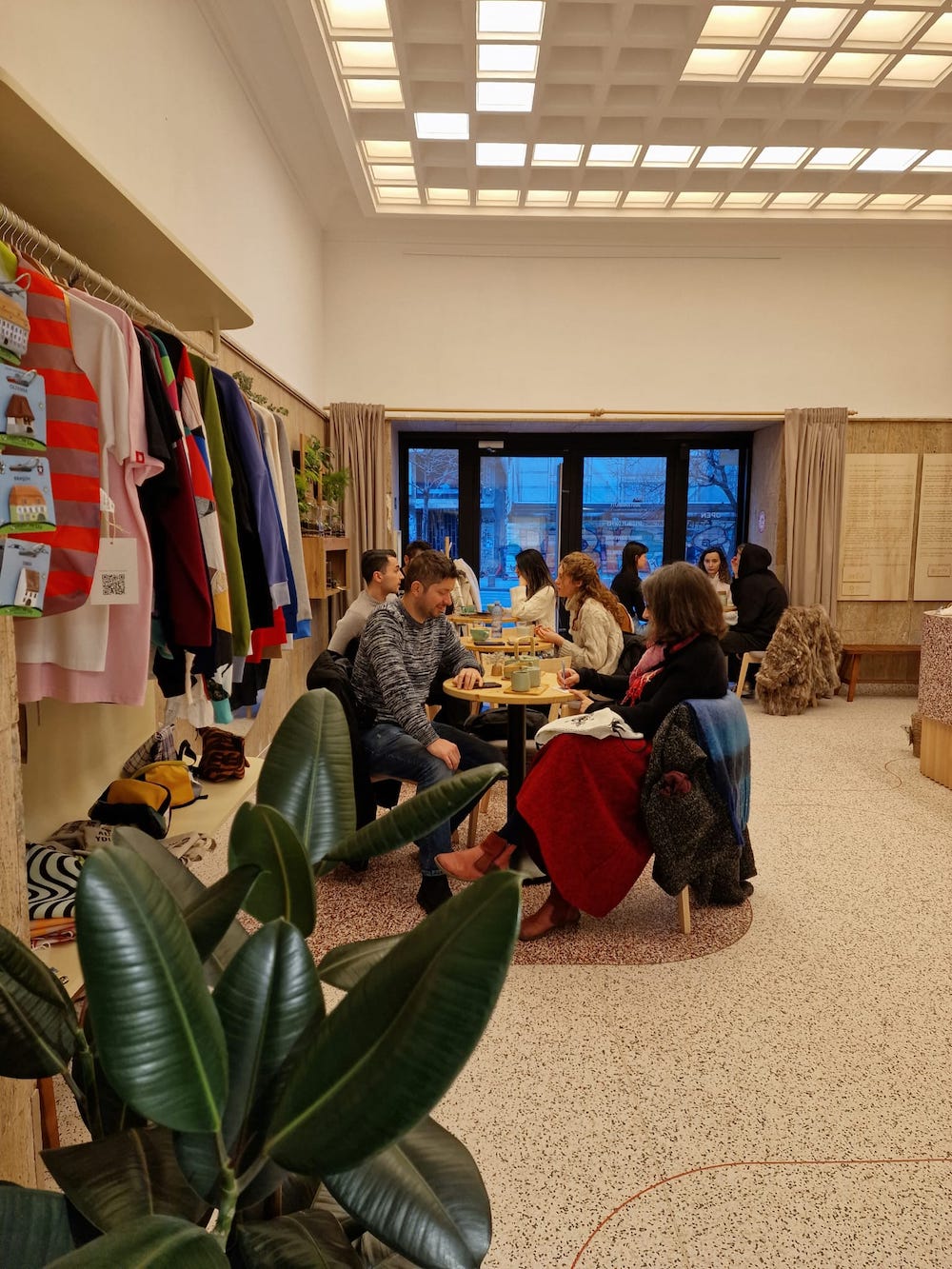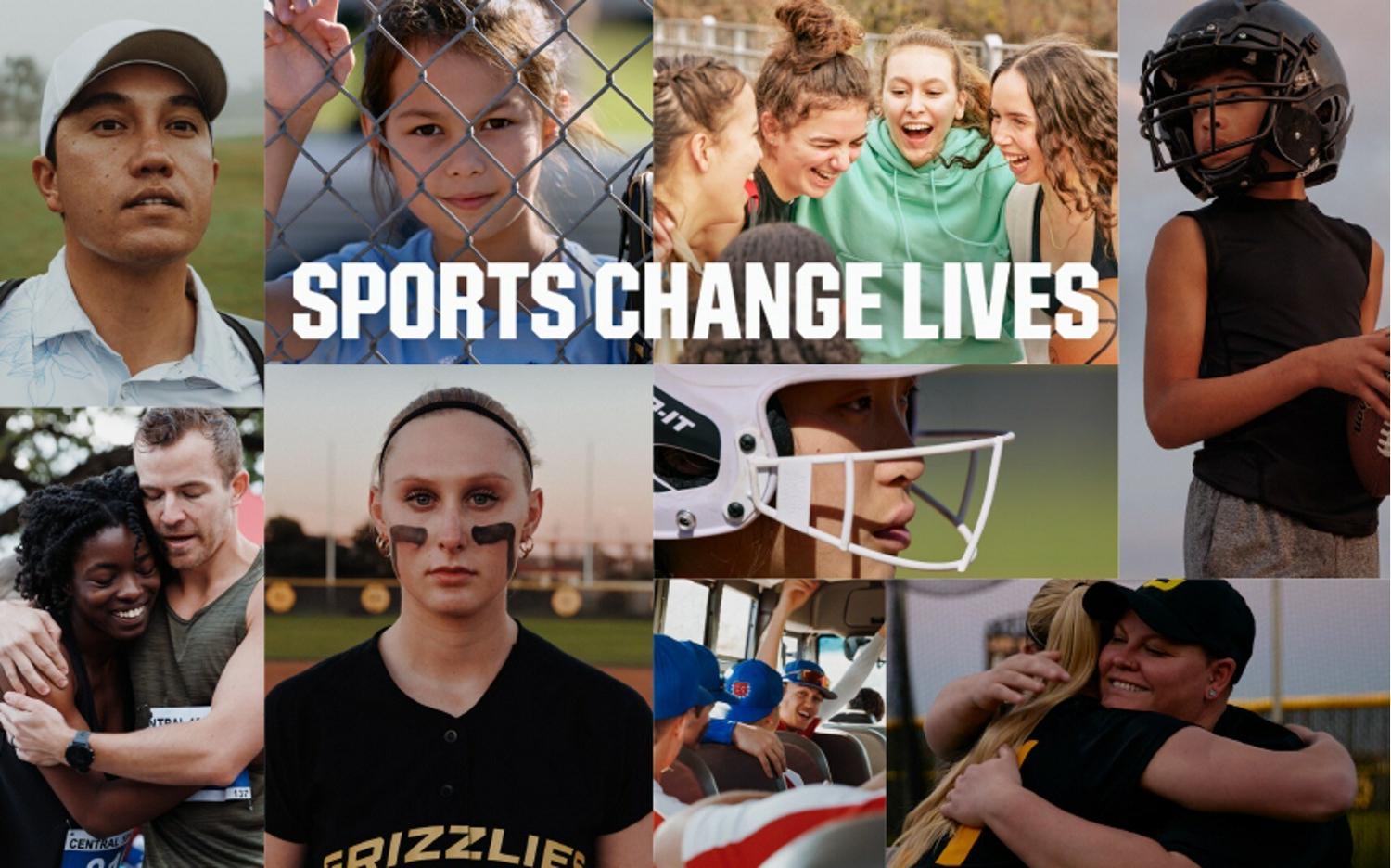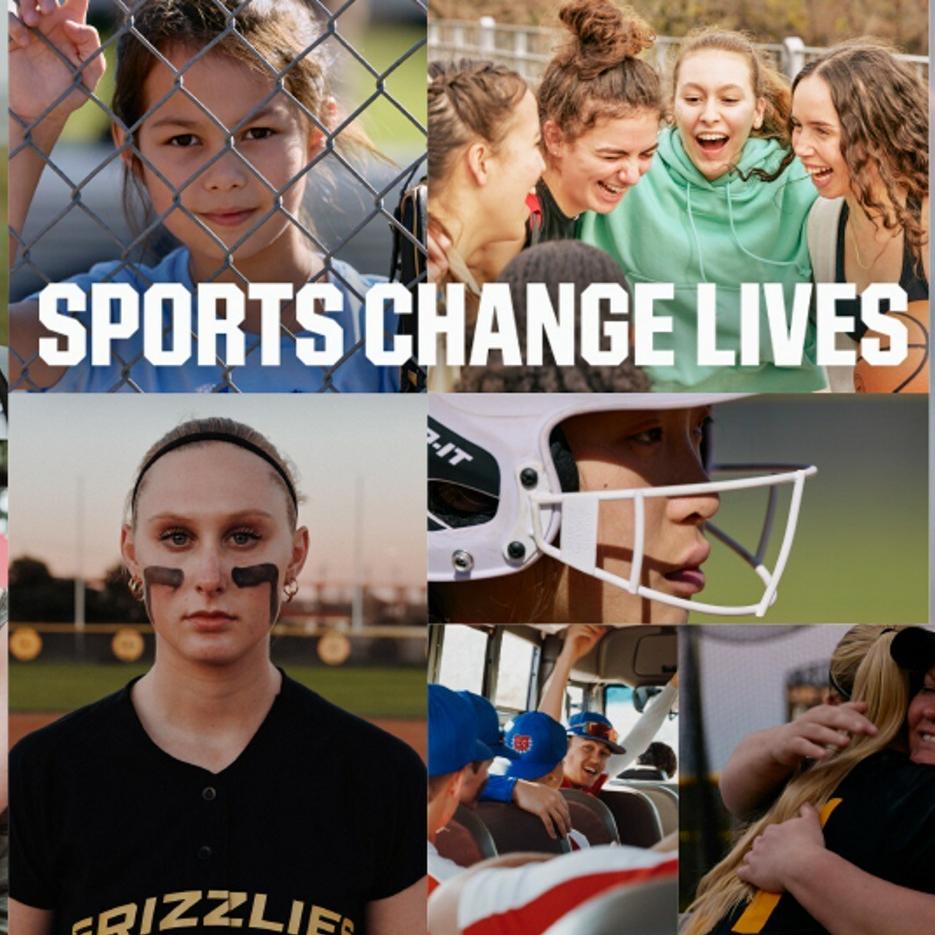Protecting the Watery Routes of Whales


Humans aren’t the only ones zipping along highways. As it turns out, oceans have their own transportation routes but with a distinctly different type of traveler: whales.
Known as blue corridors, these established routes guide the giant mammals during their migrations. The paths can stretch for thousands of miles, linking breeding and foraging areas. While protecting whale habitat is critical, so is preserving the routes that connect them.
Whales on the move
Not all whales migrate, but many species do. In particular, most of the filter-feeding baleen whales are migratory. Humpback whales can travel an impressive 5,000 miles from higher-latitude feeding grounds to tropical breeding grounds, for example. Not to be outdone, one particular gray whale broke mammalian migration records when she traveled nearly 7,000 miles each way from Russia to Mexico.
Whales migrate to track resources, give birth in warmer waters and potentially shed skin cells with harmful bacteria. A recent report from the World Wide Fund for Nature (WWF) illustrates these “whale superhighways” — or migratory corridors — in vivid detail. Clearly, opportunities exist to protect and prioritize these highly-traveled areas for whales.
Perils on the seas
Sadly, protection is needed. Six of the 13 great whale species — the largest whales on earth — are classified as endangered or vulnerable. Meanwhile over a quarter of cetacean species are threatened, including whales, dolphins and porpoises.
Regulations could go a long way toward protecting these species from being harmed by human activity. Over 300,000 cetaceans are killed each year when they become entangled in fishing gear and nets, for instance. And over 640 billion kilograms of marine debris — including fishing nets, lines, buoys, floats and various other plastics — are deposited in our oceans annually. All of this lost and discarded gear poses a threat.
Ship strikes are also a leading cause of death for humpback, blue, fin and gray whales. Unfortunately, ship traffic is predicted to increase between 240 percent and 1,209 percent by 2050, exacerbating the rate of deaths. Additionally, climate change, pollution, underwater noise and overfishing in their feeding grounds, as well as habitat loss and degradation, also threaten whales.
Protecting blue corridors
The idea that species do better when their habitat is managed and protected as interconnected networks is known as connectivity conservation. Connectivity enhances the resilience of marine populations, helps them adapt to climate change and can promote gene flow between populations. Therefore, it is essential that these watery highways between whale habitats are maintained and safeguarded.
One way to practice connectivity conservation is through networks of marine protected areas. Less than 8 percent of the ocean is protected today. But marine protected areas provide a variety of benefits — including mitigating climate change, increasing fish catches, protecting and augmenting species diversity, and providing opportunities for tourism and wildlife viewing.
Panama, Ecuador, Colombia and Costa Rica have proposed a regional initiative to link several marine reserves that would preserve migratory whales, sea turtles, sharks and rays in one laudable example of the tactic.
Likewise, the new United Nations treaty to protect the largely unregulated high seas is a victory for conservation. This treaty paves the way to establish marine protected areas, sets standards for assessing the environmental impacts of commercial activities, and establishes a coordinated approach to deal with a patchwork of global agreements and organizations. This last component is vital for migratory marine species that swim freely between territorial waters and the high seas.
Also of note, WhaleWatch is a promising solution for ship strikes that was spearheaded by a group of scientists, managers and shipping companies. This tool predicts where endangered blue whales are likely to swim off the western U.S., which helps to mitigate ship strikes, bycatch and other threats. Whale Safe is a similar mapping tool, which collects and displays shipping and whale data for the San Francisco Bay and Santa Barbara Channel.
Speed can also be a factor in mitigating ship strikes. Since traveling below 10 knots significantly reduces risks to whales, the National Oceanic and Atmospheric Administration also makes seasonal requests for vessels to reduce their speed.
The boons of blue corridor travelers
Whale conservation doesn’t just help the gentle giants of the deep. It also helps us. Whales provide a number of benefits, including that we are able to watch and experience them as they’re migrating and congregating in feeding or breeding grounds. The rapidly growing whale-watching industry is valued at nearly $2.9 billion globally.
The aquatic mammals also contribute to the ocean’s health and support the base of the marine food web: phytoplankton. In turn, this bolsters marine fisheries, which have a whopping economic impact of $325 billion annually.
Whales, through their support of phytoplankton, also represent an enormous opportunity to fight climate change. Oceans remove around 30 percent of human-emitted carbon dioxide every year, mostly due to these photosynthesizing phytoplankton. But whales also play a more direct role by uptaking large amounts of carbon in their bodies over their lifetimes. When they die, their bodies fall to the sea floor where the carbon can remain for centuries.
Whales are called an umbrella species since protecting this wide-ranging set of mammals also preserves numerous other species. These megafauna are intertwined into our history, culture and economy. And they deserve protection — whether they’re racing along their highways or resting at home.
Image credit: Silvana Palacios/Pexels
Social Enterprises Help Ukrainian Refugees Secure Dignified, Long-Term Employment


Vladyslava Terekhovych (center), a 25-year-old Ukrainian living in Romania, pictured with Daniela Staicu (left) and Alina Tiplea (right) of Merci Charity and the social enterprise shop Altrntv.
Refugees continue to flee Ukraine as the war enters its second year, and social entrepreneurship is playing a crucial role in helping them get established in their new homes. In Poland and Romania, for example, social enterprises supported by the impact investing firm NESsT are helping to provide dignified employment to Ukrainian refugees.
Vladyslava Terekhovych, 25, who goes by the nickname Vlada, is among those who are benefiting from NESsT’s investment in the region through its Accelerator Portfolio and the NESsT Refugee Employment Initiative, which invests in impact-driven small and medium-sized enterprises (SMEs) that are bringing refugees into the local economy. NESsT is partnering with Ikea Social Entrepreneurship and the Cisco Foundation on the initiative.
Vlada fled her home in Kharkiv in April 2022, crossing the border into Romania with a friend and her family, while Vlada’s family remained in Ukraine. She is among the estimated 2.4 million Ukrainian refugees who have permanently settled within neighboring European countries since the Russian invasion on Feb. 24, 2022. Nearby countries like Poland and Romania have seen the largest influx of Ukrainian refugees, with citizens of those countries continuing to provide humanitarian aid in many forms.
About a month after she arrived to Romania, Vlada, a dentist who had just launched her career when the war broke out, noticed an advertisement at a humanitarian aid station for a mobile dental clinic through Merci Charity that was serving Ukrainian refugee children.
“I decided to volunteer my help, and they asked if I could start work right then as a translator for the children and their mothers at the clinic," Vlada told TriplePundit. "Soon they put me to work as a dentist as well."
Meeting community needs while providing employment
For Daniela Staicu, vice president of Merci Charity, Vlada was a perfect match. “We could not find a better fit for our project,” she told 3p.
Merci Charity has provided dental treatment for children in rural areas of Romania for eight years, with a focus on hard-to-reach areas and marginalized communities. It is the only mobile dental clinic in Romania, serving about 600 children a year, and last year it extended its services to Ukrainian refugee children as it quickly became apparent that dental care was the most requested medical service among refugees.
Today Vlada works two jobs with the enterprise, coordinating the nonprofit mobile dental clinic while serving as a sales assistant in Atelier Merci, which is part of the NESsT portfolio and produces handcrafted clothing from sustainable, vegan, and organic materials to support the charitable arm's work. The atelier's brick-and-mortar store — Altrntv, co-founded by Staicu and Merci president, Alina Tiplea — sells not only its own products, but also handmade clothing, shoes and belts created by small Romanian artisans from underserved communities.

"A circular economy company"
The profit from Atelier Merci is spun back into Merci Charity in what NESsT co-CEO Nicole Etchart calls a “circular economy company,” since the more the social business grows, the more dignified income it can provide to suppliers in Romania as well as support the work of the charity.
“Once the war broke out in Ukraine, we began to see how many of our enterprises in eastern Europe like Atelier Merci were opening up their arms to help refugees, in this case through their NGO Merci Charity and the mobile dental clinics for Ukrainian children,” Etchart explained.
More than a job
Through the NESsT Refugee Employment Initiative, enterprises receive financing and business assistance to help provide Ukrainian refugees with long-term employment support, including career training, quality job opportunities and additional wraparound services (e.g. mental health services, language classes, childcare and support with accessing work permits, among others).
While she wants to return home one day, Vlada says she is grateful for the support and employment she has received through Merci Charity and Atelier Merci. Her mother, back in Kharkiv, is also a dentist.
As she shares in this video about Merci Charity produced by another volunteer, Vlada says: “Now I feel honored to bring my skills to help bring smile to these young children in a difficult moment in their lives. We ride around in these magical dental vans and bring joy.”

Expanding the model to more social enterprises serving Ukrainian refugees
In the months to come, as the war grinds on, more people like Vlada will be needing help. “We know many times in these situations, refugees come to a country and they stay for a long period of time," Etchart said. "They need help with housing, food, medical attention and jobs to sustain themselves.”
NESsT is in the process of identifying additional businesses like Merci Charity as part of its plan to support 15 enterprises that work or plan to work with refugees and migrants in Poland and Romania. The initiative aims to create 2,000 jobs and improve the lives of 5,000 refugees.
“We are grateful for the support of NESsT, and we need to bring more attention to the refugees who are continuing to cross the border into Romania and need our help,” said Staicu, who told us Merci Charity aims to raise more money to expand its operations and help more refugee children. “While the narrative in the news cycle may have shifted away from the refugees, the NGOs are still doing the work and people are still needing help.”
Images courtesy of NESsT
This, Not That: More Consumers Are Switching Brands Based on Sustainability


We know shoppers are increasingly interested in more sustainable products, and new research indicates many are ready to leave their standby brands behind. Half of all U.S. consumers, including 70 percent of millennials, have changed food and grocery brands based on environmental, social and governance (ESG) considerations, according to new polling.
For its latest sustainability benchmark report, the research technology company Glow surveyed 33,000 U.S. adults to get their take on the ESG performance of more than 150 food and grocery brands. Across the board, consumers report changing their spending habits to better align with their personal values — and forward-looking brands are reaping the benefits. Almost 90 percent of respondents believe it's important for businesses to be environmentally and socially responsible, and two-thirds said they're willing to pay more for products that support vulnerable groups and communities.
“It is vitally important for companies to contribute to supporting society and the planet. And there is a growing body of evidence that doing so is more than the right thing to do, it is good for business," said Julia Collins, CEO of Planet FWD, a carbon management platform for consumer brands, in a statement. "This report provides further evidence … that those who are leading in consumers' minds are already reaping the commercial benefits and are best placed for future success.” Indeed, 8 in 10 respondents said they feel more loyalty to purpose-driven brands.
ESG performance is correlated with revenue growth
Glow also found a positive correlation between ESG performance and revenue growth. Even in a troubled economy with a cost-of-living crisis, environmentally- and socially-responsible companies are seeing the economic benefits of standing for their values: 20 percent of consumers rank sustainability in their top three considerations when shopping at the grocery store, and 10 percent of millennials said sustainability is the single most important factor when making a purchase.
Additionally, while 70 percent of consumers are actively switching food and grocery brands to save money, many consider sustainability a key reason not to do so, particularly among younger shoppers.
“Now more than ever, if brands want to retain and win consumers, they must stand for something,” Mike Johnston, managing director of data products at Glow, said in a statement. “All consumers are looking for ways to save money. They will need a compelling reason why they shouldn't walk away from your brand for a cheaper alternative. Along with quality, sustainability is a key barrier to change, especially for millennials.”
It's worth noting that what consumers view as "sustainable" will vary based on the product. Consumers report that plastic and waste issues are of greater importance in the household goods department, for example, while health and wellbeing is a top concern for consumers when choosing beverages and beauty products.
Still, across all categories, products with ESG-related claims on their packaging grew an average 1.7 percent faster than those without. Labels and messaging associated with regenerative agriculture, plastic-free products, cruelty-free operations, water footprint, and renewable energy caught consumers' attention the most.
Consumer expectations are high
U.S. consumers widely perceived the food and grocery industry as a leader in corporate sustainability, Glow's data revealed, but the industry still faces significant barriers to meeting consumer expectations in a few key areas. For example, almost a third of responding consumers are dissatisfied with the industry’s efforts to reduce emissions, mitigate climate change, protect wildlife and ensure the welfare of suppliers.
While being misaligned with consumer expectations is never ideal for a company or sector, this gap presents an opportunity for brands to re-engage with this growing segment of consumers and stakeholders. By aligning ESG priorities with consumer expectations, companies can take advantage of a growth opportunity, while reducing risk and improving impacts on the environment.
“There’s a role of education here that’s critical for businesses," Tim Clover, founder and CEO of Glow, told TriplePundit. "Consumers really want to understand the issues in more detail, to understand some of the science and the lengths to which companies are going to solve these problems. Companies that are brave enough to go and take the time to explain the depth of these issues and educate the market, they’re leading. They’re winning."
Image credit: Gustavo Fring/Pexels
Dick’s Sporting Goods Marks 75th Anniversary with $75,000 Grants for Youth Sports


American youth are playing fewer team sports these days, and Dick’s Sporting Goods is looking to get more kids back in the game. The retailer recently launched its 75for75 Sports Matter Grant Program, which will distribute 75 grants worth $75,000 each to select youth sports programs across the country. The grants will be overseen by the Dick’s Sporting Goods Foundation in what could be described as a clear example of enlightened self-interest.
The program will distribute more than $5.6 million in 2023. The first 75for75 grant recipient is the Westinghouse High School football team in Pittsburgh, not far from the company’s corporate headquarters.
“Since Dick's was founded 75 years ago, we have believed sports have the power to change lives," Ed Plummer, the company’s senior vice president and chief marketing officer, said in a statement. "Whether it’s the friendships made in youth soccer, a coach who became a mentor, or a morning run that puts everything into perspective, the impacts of these experiences are what this campaign is all about. Our 75th anniversary is a great opportunity to focus even more of our efforts on the communities and youth sports programs where we can make a lasting impact.”
That impact is needed more than ever. Young children participated in team sports at a historically low rate last year, according to the Aspen Institute’s Project Play. Team sports participation dropped dramatically at the start of the coronavirus pandemic in 2020 and stayed low into 2021. But while that trend is rebounding, it’s not back to pre-pandemic levels.
Only 37 percent of children ages 6 to 12 played team sports on a regular basis in 2021, which is the most recent year of available data from the Sports and Fitness Industry Association. That’s down from 38 percent in 2020 and well below the 45 percent who played in 2008, the highest mark in recent decades. Then, team sports participation crashed just after the stock market in 2008, with help from the recession that followed. In better news, regular sports participation went up slightly for youth ages 13 to 17 in 2021, suggesting that school sports and elite travel sports may have lessened the impact of COVID-19 for this age group.
With these trends in mind, the 75for75 Sports Matter Grant Program is part of Dick’s Sporting Goods' largest ever brand campaign — “Sports Change Lives” — in celebration of its 75th anniversary and founding principles. In addition to the grant program, the company’s foundation renewed its $1.5 million contract with Good Sports to provide 20 of the most under-resourced communities across the country with $75,000 worth of youth sports equipment in 2023. Additionally, the foundation has established a new $1 million partnership with the Local Initiatives Support Corporation (LISC) to launch the Game On — Community Places to Play Initiative, which will help to create or renovate up to 20 multi-use youth sports spaces in underserved communities.
Dick's also debuted a new marketing campaign that highlights the positive impact sports can have on an individual’s character, friendships, physical and mental health, academic achievement and, more broadly, the way sports can bring together and inspire communities.
The company is also set to become the official sporting goods retail partner of the NCAA and all 90 of its men’s and women’s sports championships. The partnership will include exclusive category sponsorship rights to select fan events during the men’s and women’s Final Four games, access to exclusive NCAA championship event licensed merchandise and media investments during the men’s and women’s basketball tournaments, courtside signage, exclusive content production using historical footage and access to multiple college championships.
Dick’s Sporting Goods and the Dick’s Sporting Goods Foundation have committed more than $170 million to support young athletes since 2014. The foundation’s goal is to help give 2 million children the opportunity to participate in team sports by 2024.
Image credits: Dick's Sporting Goods/PR Newswire and Alliance Football Club/Unsplash
Lowe's Drills Deeper Into Workforce Training


Workforce training may seem like a straightforward solution to the labor shortage problem. However, something as simple as access to transportation can thwart the best of intentions. Lowe’s Foundation, the nonprofit arm of the leading hardware, building trades and home goods retailer Lowe's, just launched a new initiative that takes on workforce training with focus on community connections, and it could make all the difference.
The need for a new approach to workforce training
A number of broad factors have combined to raise concerns about labor shortages in the U.S. economy overall. The lingering impacts of the 2008 Great Recession are still evident, as well as more recent developments including the COVID-19 pandemic, the baby boomer retirement wave, a stall-out in the training pipeline and a migration bottleneck. The Joe Biden administration’s signature legislation, the Bipartisan Infrastructure Law and the Inflation Reduction Act, is also creating new jobs and adding to the pressure to fill those jobs.
The situation is especially concerning in the building and construction trades, where demand has soared without a matching rise in the availability of skilled labor. In particular, the trades have lagged in attracting the next generation of young workers, who may find it difficult to invest their time and resources in a training program when facing inflation, the high cost of housing and other economic factors.
An estimated 25 percent of the construction workforce is expected to retire by 2028, according to the Bureau of Labor Statistics. “We will lose the most skilled and knowledgeable workers, while just 10 percent of the workforce is younger than 25,” said Janice Dupré, Lowe’s Foundation chair and EVP of human resources for Lowe's.
Though not all parts of the U.S. are equally impacted, 85 percent of contractors already report difficulty in recruiting skilled workers, and an estimated 546,000 new skilled tradespeople will be needed over the coming year to meet the demand for labor.
Innovating for the workforce of the future
To help narrow the labor gap, earlier this month the Lowe’s Foundation announced the new $50 million Lowe’s Foundation Gable Grants program, which provides two-year grants for workforce training programs with the goal of channeling 50,000 people into skilled building trades over the next five years.
The word “skilled” is operational here. Dupré notes that employment in the construction trades has soared overall since 2011, but primarily in low-skilled positions. For example, the number of carpenters actually declined by 4 percent since 2011, while the total construction workforce increased by 30 percent.
As one essential key to success, Lowe's will not start the program from scratch. Instead, it will enlist existing community and technical colleges as well as community nonprofits to develop innovative new programs.
Making community connections
Non-traditional education resources have already emerged as important alternative pathways for underserved students to advance their career goals. That dovetails with Lowe’s goal of increasing diversity in the skilled trades.
“Community and technical colleges are uniquely qualified to provide the skills and education needed to fill the skilled trades workforce pipeline, because many of them have innovative programs we can support that will train and certify skilled tradespeople for jobs in two years or less,” Dupré explained. “These schools understand the needs of the communities they serve, and they have the programs and facilities to recruit and train potential skilled tradespeople."
The Gable Grant program is designed to help these schools raise the profile of careers in skilled trades, while expanding their enrollment capacity. The program will first focus on five high-demand occupations: carpenters, electricians, plumbers, small appliance repair technicians, and heating, ventilation and air conditioning (HVAC) mechanics.
By providing them with grants, the Lowe's Foundation aims to enable community colleges and trade schools to develop long-term, sustainable recruitment programs in those fields. Lowe’s also plans to monitor the programs, the industry and its grant partners to spot additional opportunities.
The community college connection
The community college field alone could provide Lowe’s with a steady stream of trainees. The American Association of Community Colleges currently represents more than 10 million students enrolled in associates degree programs, an amount almost equal to the number of students attending four-year schools.
“These institutions are deeply ingrained in their communities and well-placed to drive an increased interest in skilled trades training,” said the Association's president and CEO, Walter G. Bumphus.
They also provide students with a well-rounded education beyond the trades that could lead to more fulfilling career opportunities. “Many of these programs also include classes on entrepreneurship, which we know is often a part of the path of skilled trades workers,” Dupré told us. “We’re really trying to give people access to robust education and training opportunities that can set them up for jobs wherever they may live or move, and put them on the path toward a successful, rewarding career.”
Bringing diversity to the table
The grant application cycle for community and technical colleges opened on March 2 and ends on April 10. An information session will be held on March 22 for those interested in applying. Later this year, Lowe’s will fill out the program by launching a separate application cycle for community-based nonprofits.
The inclusion of nonprofits could help fill gaps in workforce training opportunities for rural populations, as well as women, minorities, and people enrolled in second-chance and diversion programs.
“Lowe’s has a significant commitment to diversity across our business, and we’re committed to opening doors for more people from all backgrounds and experiences," Dupré said. "The skilled trades can benefit greatly from efforts to bring more people from underrepresented groups into these programs."
Dupré notes that training for a skilled trade is particularly important for people in rural areas, those in second-chance and diversion programs, and others who struggle to find well-paying employment. “These can be life-changing opportunities," she said.
Next steps for Lowe’s
Regardless of the challenges, the numbers indicate there is an ample opportunity to build more diversity into the skilled trades. For example, approximately 90 percent of carpenters and plumbers still identify as white, according to Bureau of Labor Statistics figures. Only 5 percent of the total construction workforce is Black or African-American, compared to almost 14 percent of the U.S. population.
Women fare no better. Though women make up approximately half the population, only 11 percent of construction jobs overall are filled by women. Only 2 percent of electricians and 1 percent of plumbers are women.
The Gable Grants program could help change that, with a possible assist from state programs funded by the Inflation Reduction Act. In particular, the energy-efficiency provisions include funding for workforce training programs. “It will be up to states to determine how to develop and implement these programs, but we will monitor to assess how these efforts may complement our initiative and the work being done by community and technical colleges,” Dupré said.
Image credit: Nassorn/Adobe Stock